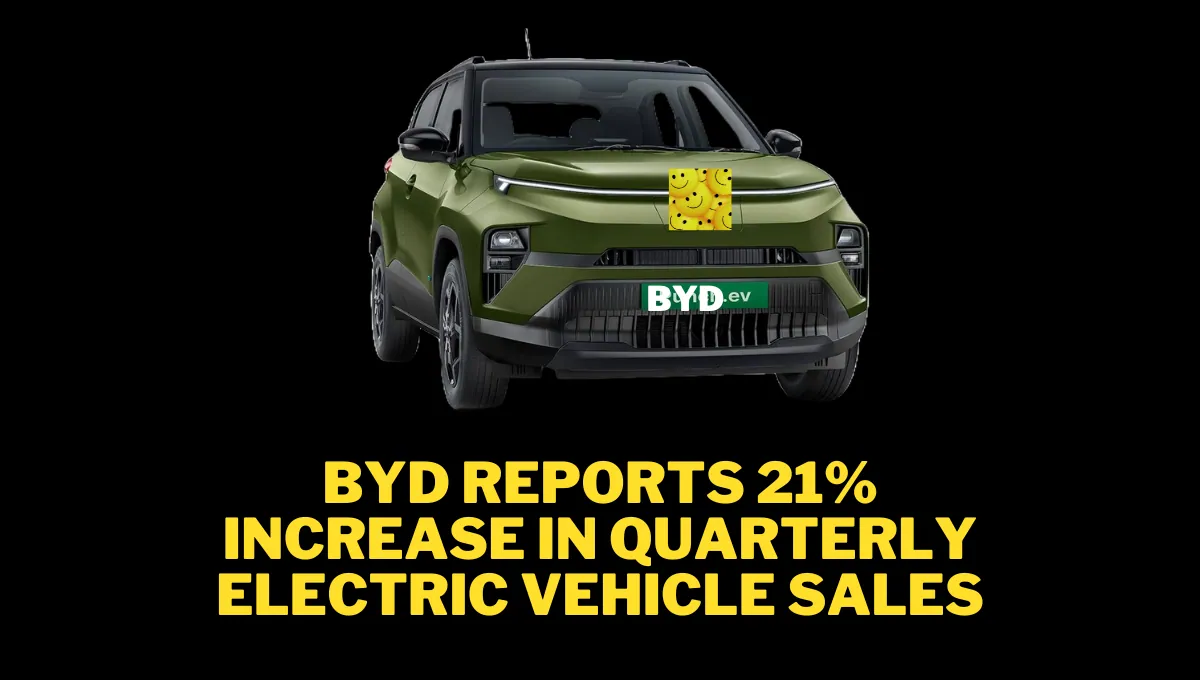China’s electric vehicle (EV) giant, BYD, has reported a remarkable 21% increase in its second-quarter EV sales, narrowing the gap with its primary competitor, Tesla.
This surge follows BYD relinquishing the title of the world’s top EV seller to the American company in the first quarter of the year. The latest figures underscore BYD’s resilience and growth in a highly competitive market.
Impressive Sales Numbers
In the April-June quarter, BYD sold a total of 426,039 electric vehicles. This impressive figure, derived from the company’s monthly sales reports, puts BYD just 12,000 units shy of Tesla’s estimated deliveries for the same period.
Tesla’s second-quarter vehicle deliveries are anticipated to show a 6% decline, marking the first instance of two consecutive quarters of decline for the U.S. automaker.
This downturn is attributed to stiff competition in China and reduced demand due to the absence of new, affordable models.
Tesla’s Challenges and Market Dynamics
Tesla, once the undisputed leader in the EV market, has encountered significant hurdles. The company warned in January that its delivery growth for 2024 would be “notably lower” as the effects of prolonged price cuts begin to fade.
Tesla has also reduced the output of its best-selling Model Y at its Shanghai factory by a double-digit percentage since March to address the weakening demand in China, its second-largest market after the United States.
Barclays predicts an 11% drop in Tesla’s second-quarter deliveries, potentially the company’s largest quarterly decline to date. If actual results fall below expectations, Tesla might once again lose its EV crown to BYD.
BYD’s Steady Growth Amidst Competition
Contrasting Tesla’s struggles, BYD has maintained a steady growth trajectory. This consistency has helped the company solidify its position in the global EV market. While Tesla faces challenges, BYD’s robust performance highlights its strategic strengths and adaptability.
Additionally, other Chinese EV makers have also reported significant growth. Nio, one of BYD’s competitors, more than doubled its vehicle deliveries in the second quarter, reaching 57,300 units. This growth demonstrates the dynamic and competitive nature of the Chinese EV market.
Factors Driving Chinese EV Sales
Several factors have contributed to the strong sales performance of Chinese EV manufacturers. Price reductions and a growing consumer shift towards electric and hybrid vehicles over traditional gasoline-powered cars have been pivotal.
According to Cui Dongshu, the secretary general of the China Passenger Car Association (CPCA), these elements have significantly boosted sales for Chinese EV makers in recent months.
The CPCA reported that in May, new energy vehicles, including EVs and plug-in hybrids, accounted for 46.7% of total car sales in China.
This marks a new monthly high and underscores the accelerating transition towards greener transportation options in the country.
The Future of the EV Market
The EV market is in a state of rapid evolution, with both established players and newcomers vying for market share.
BYD’s continued growth, despite the challenges faced by Tesla, highlights the competitive landscape and the potential for shifts in market leadership.
As consumer preferences continue to evolve, and as new models and technologies emerge, the dynamics of the EV market are likely to see further changes.
For now, BYD’s strong performance in the second quarter positions it well to challenge Tesla’s dominance and perhaps reclaim its position as the world’s leading EV manufacturer.
Conclusion
BYD’s 21% increase in quarterly EV sales is a testament to its strong market strategy and resilience amidst fierce competition.
While Tesla faces significant challenges, BYD’s steady growth highlights the dynamic and competitive nature of the EV market.
The continued shift towards electric and hybrid vehicles, driven by consumer demand and environmental considerations, will likely shape the future of the automotive industry.
The coming months will be crucial for both BYD and Tesla as they navigate the complexities of the global EV market.
Stakeholders and industry watchers will be keenly observing how these giants adapt to changing market conditions and consumer preferences.
As the race for EV dominance continues, one thing is clear: the future of transportation is electric, and companies that can innovate and adapt will lead the charge.
